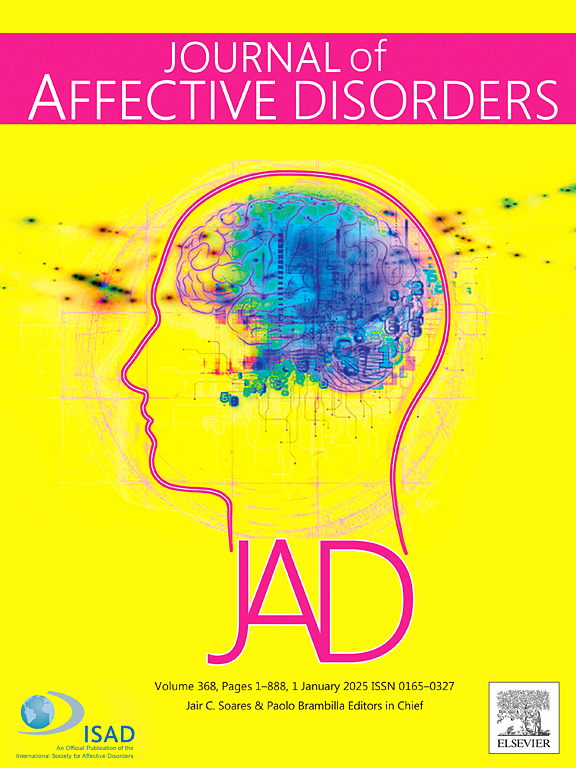Psychotropic comedication trends in long-term lithium treatment for older adults with bipolar disorder: A 10-year analysis
IF 4.9
2区 医学
Q1 CLINICAL NEUROLOGY
引用次数: 0
Abstract
Objectives
The prescription of psychotropic comedications in patients with bipolar disorder (BD) evolved between 1995 and 2010. This study provides a comprehensive overview of prescription trends across various classes of psychotropic comedications, alongside lithium treatment, in older adults (aged ≥55 years) with BD, from 2010 to 2019.
Methods
This naturalistic, retrospective cohort study included 166 older adults (mean age 67.4 years) treated with lithium. Medical files from a large mental healthcare provider in the Netherlands were used to construct Lifecharts. The average proportion of time that different classes of comedications were prescribed during follow-up was calculated.
Results
Patients received psychotropic comedications next to lithium for 75.8 % of total follow-up time. Benzodiazepines were prescribed for 56.2 % of follow-up time, antidepressants for 31.6 %, atypical antipsychotics for 25.9 %, a second mood stabilizer for 18.4 %, and typical antipsychotics for 8.7 %. Most classes of comedications did not show significant changes in prescription trends over the 10-year observation period. Quetiapine at doses below 50 mg/day was prescribed significantly more over time (p = .033), its prescription duration increasing from 2.0 % of total follow-up time in 2010 to 8.1 % in 2019.
Limitations
Generalizability is limited due to focus on older lithium-treated BD patients, potential selection bias, and retrospective design.
Conclusions
Long-term lithium treatment in older adults is mostly combined with other psychotropic medications. Frequent and prolonged use of benzodiazepines and significant increase of low-dose quetiapine use are concerning, given their adverse effects and lack of long-term efficacy. Prescription trends observed before 2010 have largely stabilized.
Plain language summary
In this study, we examined what types of comedication were used alongside lithium in older adults with bipolar disorder between 2010 and 2019. For this purpose, we reviewed the medical records of 166 patients 55 years or older in the Netherlands. These patients were prescribed additional psychotropic medications along with lithium 75.8 % of the time. Benzodiazepines, often used to treat anxiety and sleep issues but not recommended for long-term use due to adverse effects, were the most frequently prescribed, namely 56.2 % of the time. Antidepressants were prescribed 31.6 % of the time, atypical antipsychotics 25.9 %, a second mood stabilizer 18.4 %, and typical antipsychotics 8.7 %. Although most prescription trends remained stable between 2010 and 2019, prescription time of low-dose quetiapine increased. We conclude that lithium maintenance treatment is mostly combined with other psychotropic comedications in older adults with bipolar disorder. Considering their potential adverse effects and lack of long-term benefits, the increasing use of low-dose quetiapine and the frequent long-term use of benzodiazepines are particularly concerning.
求助全文
约1分钟内获得全文
求助全文
来源期刊

Journal of affective disorders
医学-精神病学
CiteScore
10.90
自引率
6.10%
发文量
1319
审稿时长
9.3 weeks
期刊介绍:
The Journal of Affective Disorders publishes papers concerned with affective disorders in the widest sense: depression, mania, mood spectrum, emotions and personality, anxiety and stress. It is interdisciplinary and aims to bring together different approaches for a diverse readership. Top quality papers will be accepted dealing with any aspect of affective disorders, including neuroimaging, cognitive neurosciences, genetics, molecular biology, experimental and clinical neurosciences, pharmacology, neuroimmunoendocrinology, intervention and treatment trials.
 求助内容:
求助内容: 应助结果提醒方式:
应助结果提醒方式:


